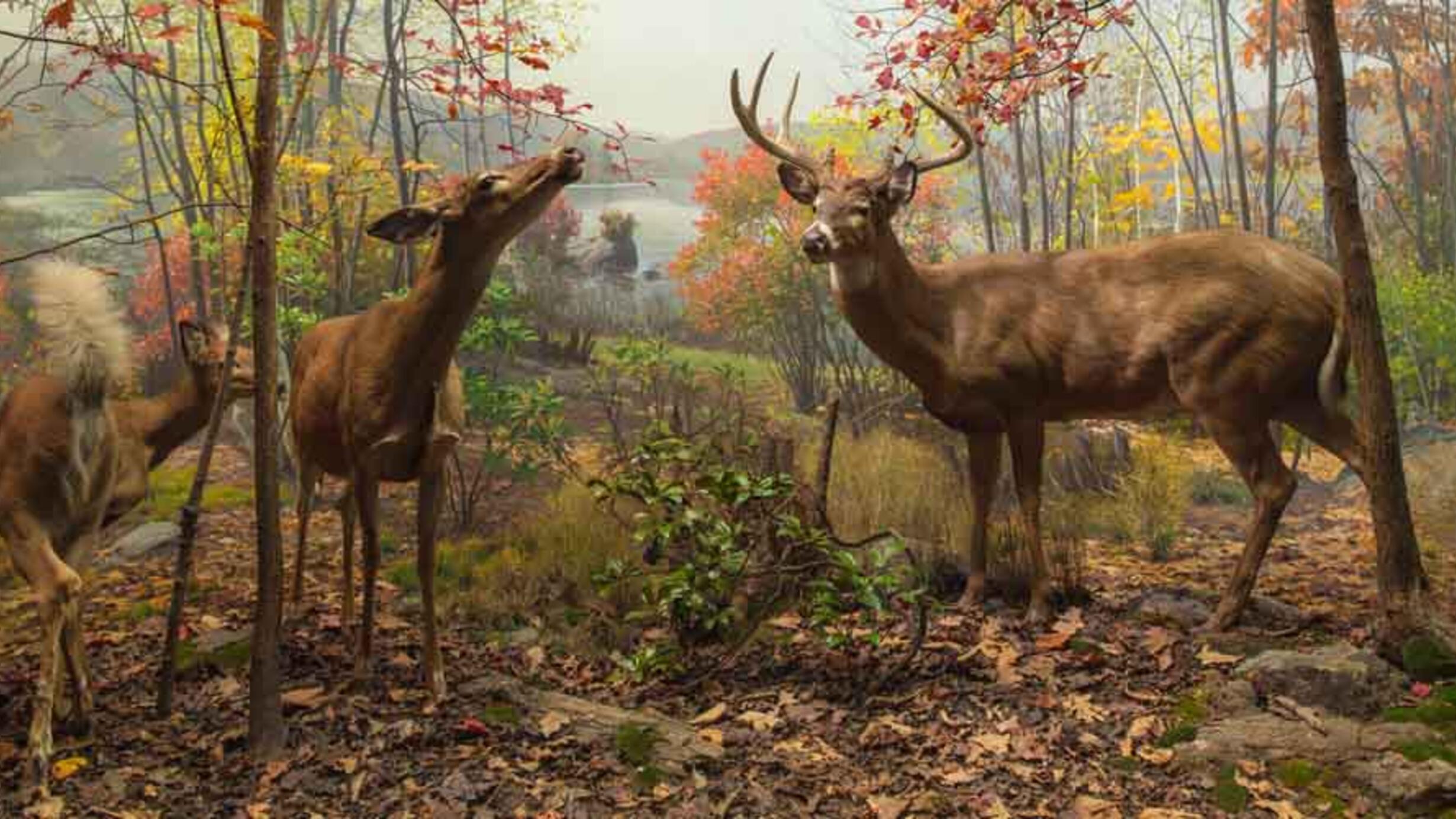White-Tailed Deer
Part of Hall of North American Mammals.

October Morning, Southern New York
The leaves of blackgum trees, already ablaze in scarlet, attract a fawn, doe and buck. After the green growth of summer fades, northern deer exploit twigs, dried leaves and evergreen needles in fall and winter. In any season, white-tailed deer spend more time feeding than doing anything else.
This six-month-old fawn has already molted its spotted coat. Female fawns that are well nourished can mate as early as their first autumn, and in later years can produce twins or triplets. When the eating is good, white-tailed deer numbers can increase rapidly.
Deer, a Success Story
Bear Mountain State Park, New York
Besides black bears, white-tailed deer are the only large mammals still common on the East Coast. Their success is directly related to our own. Early settlers exterminated eastern cougars and wolves, leaving local deer to breed freely. And when people fell forests to make farms and roads, this only encourages more deer, which prefer grasses, crops and tender young trees to deep woods.
With success come costs. When deer overwhelm an area, they can browse so heavily that new trees can’t grow, and loss of quality food malnourishes the deer. To keep deer and ecosystems healthy, this species must be managed with care.